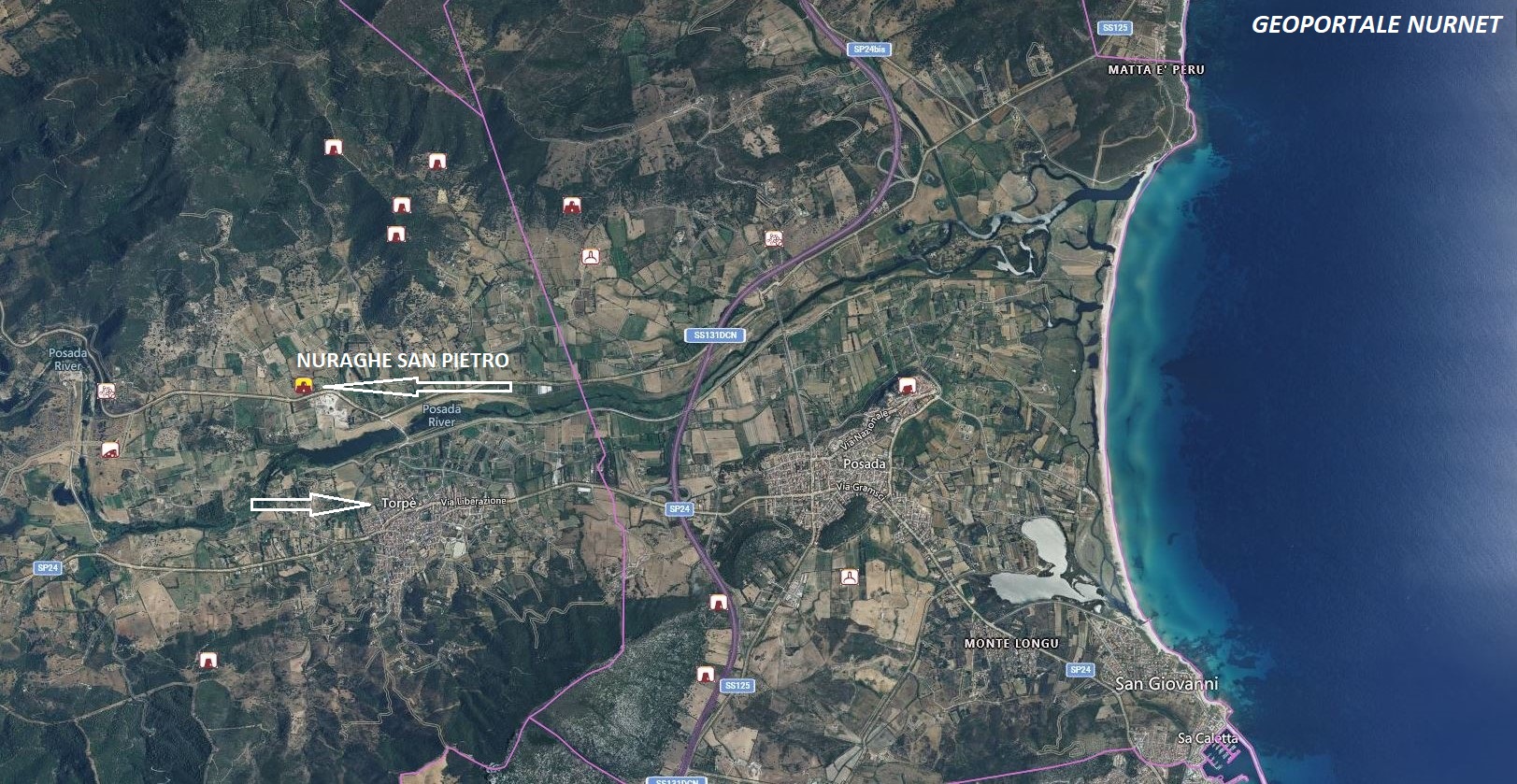The nuraghe San Pietro, in Torpè, “was probably erected on a previous prenuragic structure, then, for almost two millennia, nuragic and Roman peoples gravitated around it, inhabiting a fertile plain crossed by the rio Posada, now included in the area of the Tepilora oasis. The nuraghe stands in the eponymous locality three kilometers from Torpè, a few hundred meters from the riverbed. It is a quadrilobate building, with a central mastio – perhaps older than the rest of the structure – built using large blocks of trachyte, arranged in rows with added wedges. The side towers, however, were made using schist blocks. The main tower has a rectangular entrance covered with a flat arch and oriented to the south. The external diameter is about 14 meters. Inside, you will observe a guard post and a spiral staircase leading to the terrace. Following the corridor, you will reach the central chamber, with three niches arranged in a cross.
The structure features an irregularly shaped courtyard, within which you will notice a funnel-shaped well. During the last excavation campaign, a circular chamber surfaced against the mastio: at the base, along the circumference, there is a counter on which a large number of objects were found, including vases, bowls, and pots, testimony to the commercial exchanges that took place at the site. In the center of the chamber is the hearth, bordered by rounded stones. The southwest tower has yielded the most significant evidence of the long period of occupation of the site; indeed, the finds range from the Early Bronze Age – particularly related to the Bonnanaro culture, between the 19th and 17th centuries BC – to the imperial age, up to the 4th-5th centuries AD. It is the only tower of the nuraghe to show traces of Roman occupation: around the 2nd century AD it was used as a granary, but it also stored fava beans, timber, and cork. Fifty meters south of the fortress, you will see traces of other buildings. This is a building complex originally composed of nuragic huts, later reused in the Roman era, with structures that were in turn topped by a quadrangular building, perhaps medieval…”
(from Sardegna Turismo)
The photos of the nuraghe San Pietro are by: Nuraviganne, Bibi Pinna, and Gianni Sirigu.









